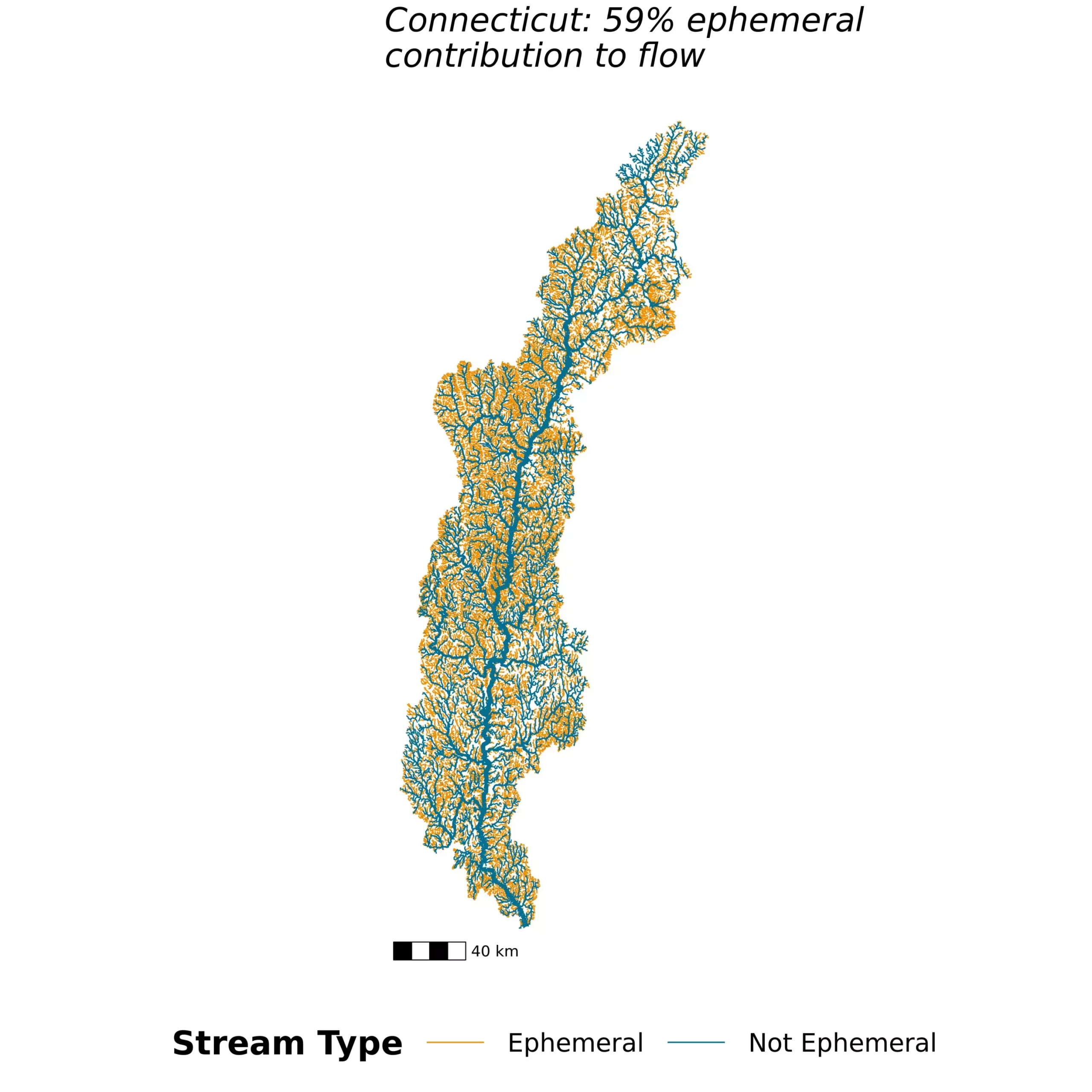In the realm of environmental conservation, rivers and streams are typically regarded as fixed and predictable entities—permanent bodies of water that pose evident risks when contaminated. However, recent research challenges this conventional wisdom by unveiling the substantial role played by ephemeral streams—those that appear only after rainfall and often vanish during dry spells. These transient waterways have been largely ignored in regulation and protection efforts, but evidence suggests they are far from insignificant. Strikingly, they contribute over half of the water volume downstream, influencing entire ecosystems and human communities alike.
This revelation prompts a fundamental reevaluation: Are regulatory frameworks sufficiently grasping the true scope of watershed health? The answer appears to be a disconcerting no. The Supreme Court’s decision in 2023, which narrowed the definition of protected waters under the Clean Water Act (CWA), now leaves these ephemeral streams outside legal protection. It’s a fact that could dangerously compound pollution issues, especially considering how these seemingly “dry” gullies can rapidly become conduits for pollutants during rain events. The implications are profound: where we once believed only permanent rivers required regulation, we now face the reality that much of our water system remains unguarded—an unintentional weak spot in environmental oversight.
The Surprising Influence of Ephemeral Streams Across the U.S.
What makes ephemeral streams especially alarming is their extensive influence, surprisingly spanning the entire United States and defying assumptions of regional disparity. Research from the University of Massachusetts Amherst and Yale University shows that, on average, these fleeting watercourses contribute approximately 55% of the total water flowing into larger rivers. Their influence is especially pronounced in the West, where arid landscapes dominate; in places like Nevada’s Black Rock Desert and California’s Humboldt County, ephemeral streams account for as much as 94% of river flow.
However, what truly shocks is their significance beyond these arid regions. On the East Coast, characterized by humid climates and abundant groundwater, ephemeral streams still supply nearly 60% of the flow into major water bodies like Long Island Sound. This astounding statistic underscores a broader truth: ephemeral streams are integral to the hydrology across diverse landscapes, playing a pivotal role in shaping water quality and quantity in ways previously underestimated.
These findings discredit the misconception that ephemeral streams are merely local phenomena confined to dry or desert areas. Instead, they reveal that even in lush, groundwater-rich environments, these temporary pathways mobilize pollutants, sediments, and nutrients that can swiftly travel downstream, impacting larger water bodies and ecosystems. Their pervasive presence demands a rethinking of traditional hydrological models and regulatory priorities.
Policy Gaps and the Challenges of Regulation
The recent Supreme Court ruling has handed a significant blow to efforts aimed at safeguarding waterways. By narrowly defining what constitutes protected waters—limiting protections to bodies that are “relatively permanent”—the Court effectively excludes ephemeral streams from regulatory oversight under the CWA. This legal shift offers a stark contrast to the scientific evidence demonstrating their outsized contribution to water flow and pollution transfer.
Legal scholars like Yale Law School’s Doug Kysar argue that recognizing the interconnectedness of water systems could provide a constitutional foundation for extending protections. Given that water pollution frequently crosses state boundaries and implicates interstate commerce, there’s a compelling argument that ephemeral streams should be covered by federal oversight. However, enforcement is likely to remain fragmented, with states and local governments reluctant to adopt costly regulations for water bodies that largely flow sporadically and are difficult to monitor.
This regulatory void presents an environment where non-permanent streams can be exploited—the classic case being the illegal dumping of pollutants in dry gullies that only fill with water after storms. When these pollutants are washed downstream, they can compromise water quality far from their source, threatening ecosystems, agriculture, and drinking water supplies. The challenge is not only scientific but also political: how to craft policies that acknowledge the critical role of ephemeral streams without overwhelming local agencies or stoking regulatory resistance.
Redefining Water Protection in the Context of a Changing Climate
The implications of this research stretch beyond immediate pollution concerns—they touch on the broader issues of environmental resilience in an era of climate change. The increasing frequency and intensity of storms mean that ephemeral streams will flow more often, transporting accumulated pollutants into larger water systems with greater impact. This dynamic complicates pollution mitigation, as authorities must grapple with the unpredictability of these waterways.
Furthermore, the scientific community emphasizes that the size of the drainage basin used in models influences the perceived importance of ephemeral streams. While their influence appears to hover around the 55% mark when analyzing large regional basins, smaller basins suggest even greater contributions. This complexity indicates that our understanding of watershed dynamics is still evolving, and current regulatory approaches may be grossly inadequate.
Ultimately, this research advocates for a paradigm shift: water management policies must recognize the interconnectedness of all streams—permanent or ephemeral—and incorporate this understanding into legal frameworks. A more inclusive, science-based approach could help bridge the gap between regulation and reality, ensuring that water quality and ecosystem health are protected comprehensively. As awareness grows that ephemeral streams are not just fleeting trickles but vital arteries of the hydrological system, policies must adapt swiftly to prevent a future where pollution’s reach extends beyond our current comprehension.

